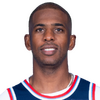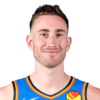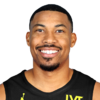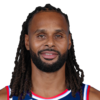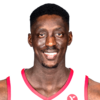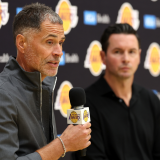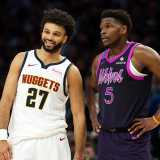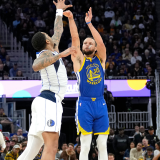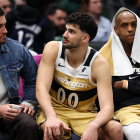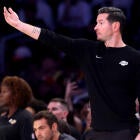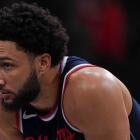NBA Free Agency 2017: Breaking down the best shooters on the free-agent market
Can your favorite team afford someone like J.J. Redick or Otto Porter?

If the NBA Finals reaffirmed anything about the state of the modern game, it is that shooting remains paramount. The final score of the final game was 129-120, with both teams playing small lineups in order to stretch the floor. Not every team approaches the game like the Houston Rockets do, but if you can't at least maintain proper spacing, you're starting every game at a significant disadvantage. With that in mind, let's take a look at the market for shooters this summer.
(This list does not feature Stephen Curry and Kevin Durant, who are expecting to re-sign with the newly crowned champion Golden State Warriors as soon as free agency begins.)
You might not think of Paul as a shooter first and foremost, but his ability to make 3s, midrange shots and floaters means he is always a threat to score with the ball in his hands. This sets up all of the brilliant passes you've seen him make. He shot 41.1 percent from deep this season on five 3-point attempts per game, both career highs.
Did you know that Lowry shot 42 percent on his 262 off-the-dribble 3-point attempts this season? You would if you read this fine piece by ESPN's Kevin Pelton, which illustrates just how important that shot has become in today's NBA. Similar to Paul in terms of his approach and his smarts, Lowry is an all-around monster on offense, and he is coming off the most efficient year of his 11-year career.
Like the two fellow All-Stars above him, Hayward is in line for a maximum contract and is much, much more than a shooter. He has, however, developed into one of the best and most versatile shooters in the league. He can spot up, he can come off screens, he can shoot off the dribble and he can finish through contact. He shot 39.8 percent from 3-point range on 5.1 attempts per game this season.
Thanks to the recent emergence of the Karl-Anthony Towns, Kristaps Porzingis and Myles Turner types, Ibaka doesn't quite stand out like he used to. It's still rare, though, to find a genuine rim protector who can shoot 39.8 percent from deep, as Ibaka did for Toronto after a midseason trade. He'll certainly command a contract starting at more than $20 million per season.
One of this season's breakout players, Porter (a restricted free agent) went from a 36.7 percent 3-point shooter to a 43.4 percent one and improved his free-throw percentage significantly, too. That marksmanship combined with his defensive versatility means he's in line for a max deal, though there might be some concerns about regression -- he shot 34.1 percent from deep after the All-Star break and just 28.2 percent in the playoffs.
Hill is not considered a star, but he played like one in the 49 games in which he was healthy last season. In addition to his all-world defense, he shot 40.3 percent from deep and is completely comfortable playing a complementary role on offense and spotting up on the perimeter. The Jazz should do everything they can to keep him, and If the Spurs can't get Paul, perhaps they should see if a reunion with Hlil is possible.
I'm not sure anyone on this list works harder for his open looks than Redick does. Finally in line for a big payday, he is the kind of player who can transform an offense with his ability to use screens and knock down 3s on the move. He has shot 44 percent from deep in his four years with the Clippers, and he has done so on a team-friendly contract. It's time for a raise.

He's not quite the force he was when he made the All-Star team in his magical 2014-15 season as a member of the Hawks, but the man did make 48.5 percent of his 3s in his 35 regular-season games in Cleveland. Few players have as much gravity as him on the perimeter, and he can do more than just stand and shoot. I wonder if the 36-year-old would consider pulling a Durant and joining the Warriors, whose style is more in tune with Korver's basketball sensibility.
The dude just keeps getting better, both as a playmaker and a defender. His best skill, however, is his ability to energize an offense with his shot-making. Mills shot 41.3 percent from deep this season, and is capable of scoring 20 points in 20 minutes when he gets going. After seven seasons as a backup, he will now be paid like a starter.
Already a stout defender and crafty passer, Ingles solidified his standing as a dependable 3-and-D guy by making 44.1 percent of his 3-pointers this season. He wants to return to Utah, but it's unclear whether or not the team will be able to afford him as a restricted free agent.
Miles quietly had the most efficient season of his career this season, making 41.3 percent of his 3s and providing the Pacers with much-needed floor spacing. He is not a big name, but he is the kind of versatile, intelligent, two-way wing player that isn't easy to find -- just ask the Thunder -- so it was a no-brainer for him to decline his $4.8 million option.
His reputation might exceed his production as a shooter -- Gallinari is a 37 percent career 3-point shooter and he shot 38.9 percent this season -- but he's a legitimate stretch 4 who can attack closeouts and guard multiple positions. The injury history might scare some teams, but his talent will make him an attractive target anyway.
The Wizards needed some firepower off the bench, so they traded their first-round pick in next week's draft for Bogdanovic four months ago. He shot 39.1 percent for them, and he helped swing a couple of playoff games. He is wildly inconsistent, however, and he is a minus defender despite his good size. It's also worth noting he's a restricted free agent this summer.
After the worst season of his career in 2015-16, Swaggy P bounced back by making 40.4 percent of his 3s under coach Luke Walton. Young earned praise for his commitment on defense, too, but he's still likely to be seen as more of a gunner than a 3-and-D guy.
Waiters has always been an attacking guard, but he shot a career-high 39.5 percent on 4.7 3-point attempts per game in Miami. When he is making his jumper, it makes him even more difficult to keep out of the paint.
Snell broke out as soon as he left Chicago, shooting 40.6 percent from 3-point range and improving his true shooting percentage from 47.8 to 60.3 percent in Milwaukee. He always looked the part of a 3-and-D guy, but now he genuinely is one.
He has played only 39 games in the last two seasons, but when he's on the court, he is deadly. Meeks made 40.9 percent of his 3s in Orlando, and some team could get itself a bargain if he manages to stay healthy.
On a team that launched a ton of 3s, Babbitt was easily the best floor spacer. He shot 41.4 percent, which is in line with his career average, and he was about equally good from the corners and above the break. Babbitt is one-dimensional, but man, what a dimension!
The combo guard took on a bigger role in his second season with the Warriors, and he rewarded them with his best season as a pro. Clark shot 37.4 percent, and when you combine that with his ability to play some point guard minutes, his market price might wind up being too high for the champs to retain him.
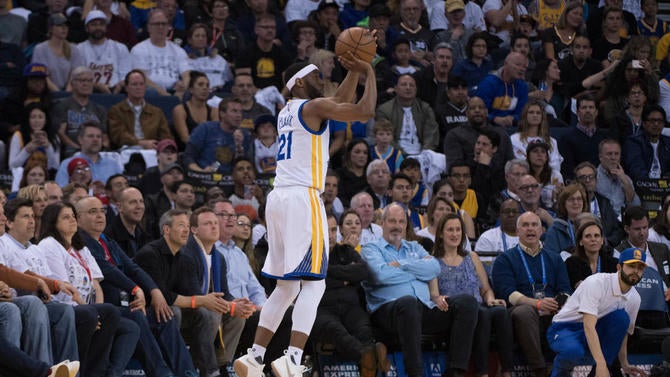
Speights started getting comfortable shooting 3s in the latter part of the 2015-16 season, and he fully embraced his new identity as a stretch 5 in Los Angeles. About half of his field goal attempts came from behind the arc, and he made 37.2 percent of them.
Despite being streaky and sometimes reticent to shoot, Patterson wound up shooting 37.2 percent in the regular season, which is right in line with his career mark. He's not the stretchiest stretch 4, but he makes up for that with his versatility and basketball IQ.
Similar to Patterson, Green is a glue guy for Memphis because of his versatility and mobility. He played a crucial role in David Fizdale's reimagined offense by making 38.2 percent of his 3-pointers. He's a restricted free agent.
Long one of the most intelligent defenders in the NBA, Mbah a Moute shot a career-high 39.1 percent from deep on 1.4 attempts per game last season. Most of those looks were wide open, but this represents progress -- he has always been a reluctant shooter.
The 40-year-old made 37.8 percent of his 3s last season, which is helpful because he's not particularly reliable around the rim anymore. More than ever, he is a catch-and-shoot guy -- 60 percent of his field goal attempts came from behind the arc this season.
Predictably, Rush's 3-point percentage dipped a bit -- from 41.4 percent to 38.6 percent -- after leaving the Warriors for the Wolves. That's still a solid mark, though, and teams looking for an affordable floor spacer should give him a look.
There's still more potential than production here, but McLemore at least managed to improve his 3-point percentage to 38.2 percent this season. A change of scenery might be best for him, but Sacramento can match any offer sheet if it wants to keep him around since he's a restricted free agent.
Poor Finals aside, Williams fit in extremely well with the Cavs, shooting 41.5 percent from 3-point range in 24 regular-season games and playing an almost perfect first-round series against the Pacers. Interestingly, he shot even better from deep with LeBron James on the bench than he did when James was creating easy looks for him.
The 39-year-old brought more than veteran leadership to Milwaukee, making 42.7 percent of his 3s, his best mark in a decade. Expect him to either stick with this group or join a contender.
It kind of feels like a stretch to call Beasley a "shooter," but it's safe to say Beasley is now underrated in that department after refining his shot selection in the last couple of seasons. He didn't take a ton of 3s in Milwaukee, but he made 41.9 percent of them and 45.1 percent from midrange.
Note: To be considered for this list, the player had to shoot at least 37 percent from 3-point range. Here are some upcoming free agents you might think of as solid shooters who didn't meet that mark: Kelly Olynyk, Jonas Jerebko, Nikola Mirotic, Anthony Morrow, Kentavious Caldwell-Pope, Spencer Hawes, Omri Casspi, Jeff Teague, Jrue Holiday, Justin Holiday, Tim Hardaway Jr., Ersan Ilyasova, P.J. Tucker.


